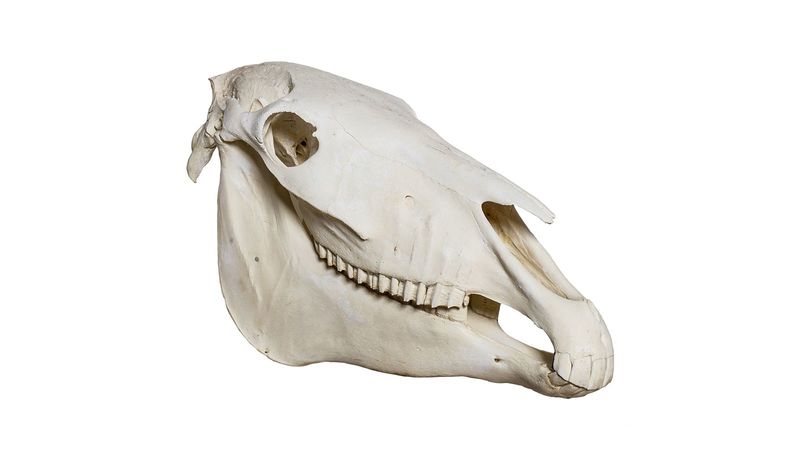What do Horses Eat?
Horses are adapted to graze on grass. They have a relatively small stomach, but long intestines to provide them with a steady stream of nutrients throughout the day. Unlike cows, horses are not ruminants and they only have one stomach. They are, however, able to use cellulose (a main component in grass) as a food source, unlike humans.

Photo: MUSE Science Museum
An adult horse has twelve incisors at the front of the mouth, for cutting grass as they bite. They have twenty four further molars and pre-molars for chewing. Horses have a very good sense of taste, so they can pick through their feed using their prehensile (capable of gripping) lips, sorting out even the smallest grains to select their favourites.
Horses are unable to vomit, so if they develop problems with their digestion, these can prove fatal.
Read More: Breeding and Life Stages
